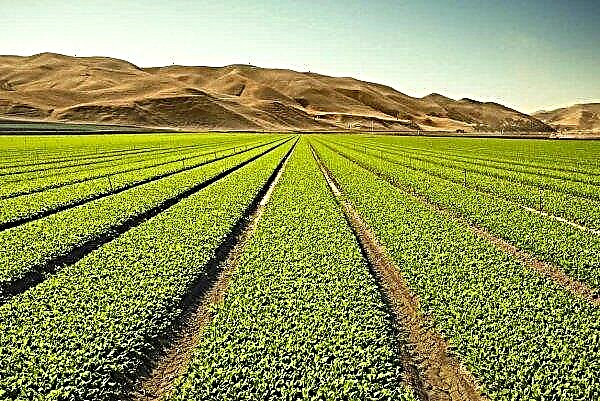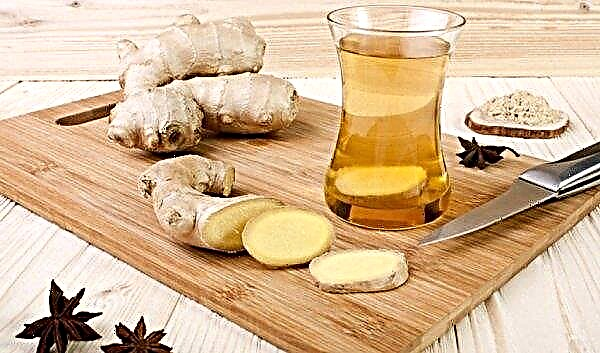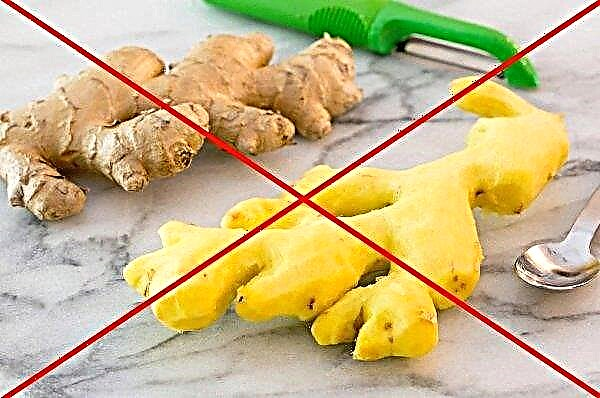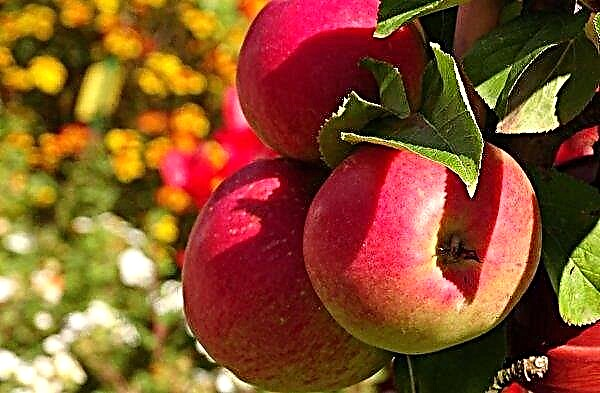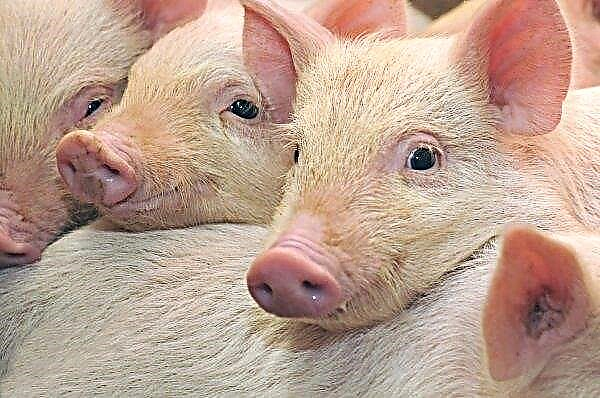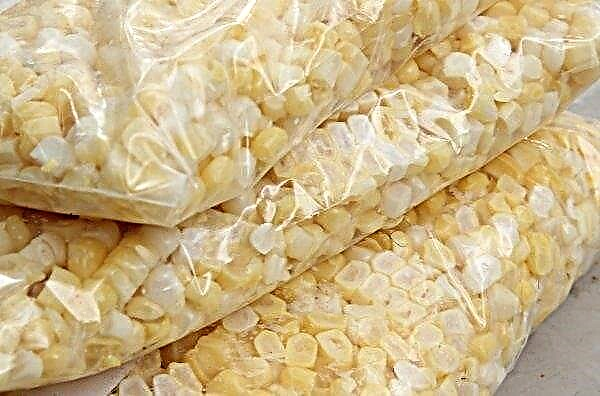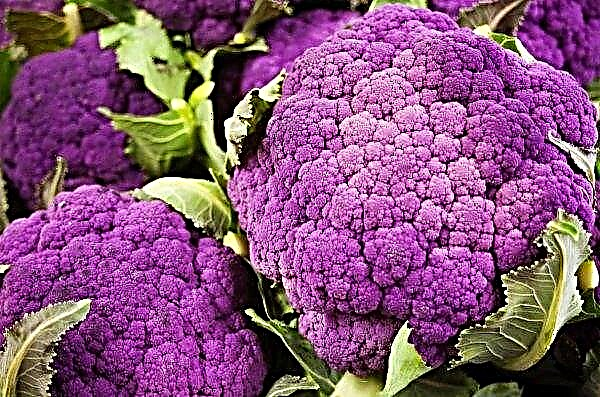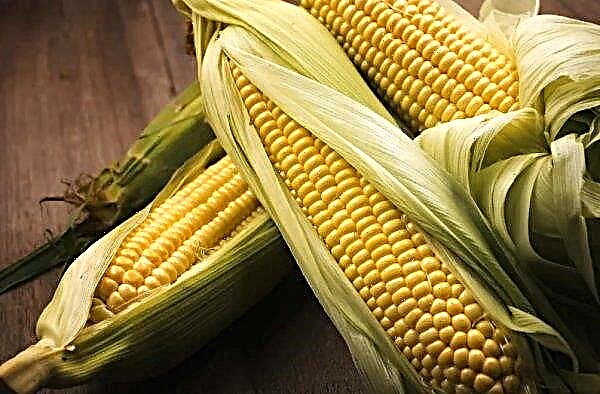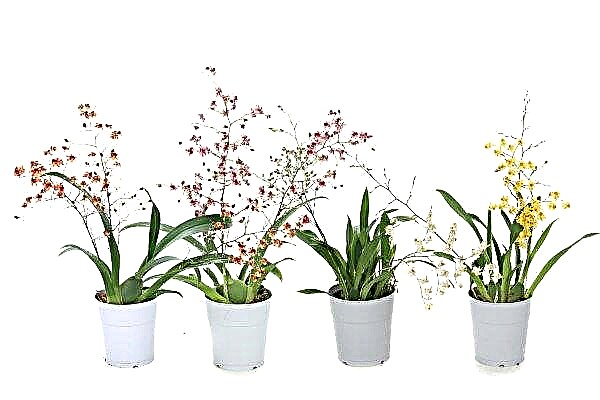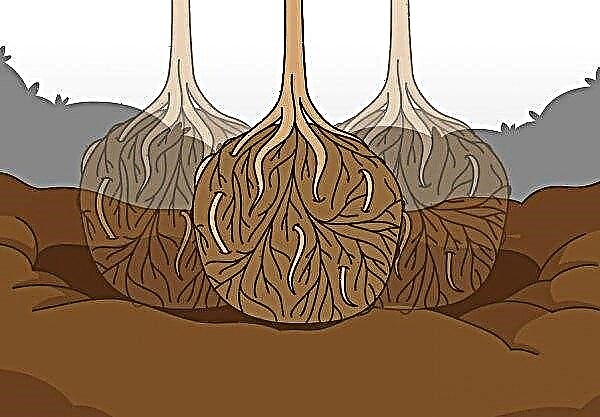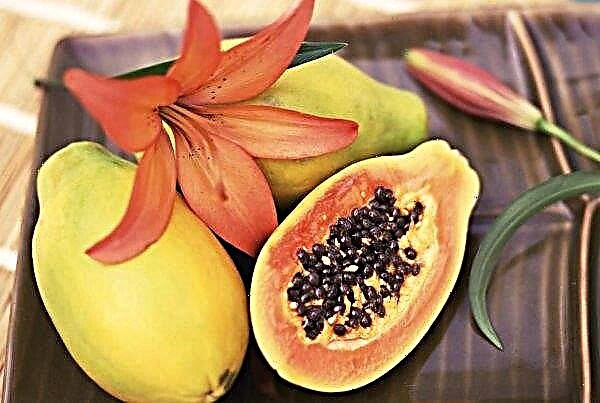Very often in summer cottages you can see planted conifers. With their appearance, they bring refined beauty to the created compositions, and also release substances useful to the human body into the air. One of the representatives of these noble plants is Konika spruce, which appeared as a result of natural changes in the Canadian relative. How to grow a tree of small sizes in your country house at home - later in the article.
General description of Konika
The Konika tree belongs to the dwarf representatives of the Canadian gray spruce. At home in Canada, it grows up to 4 m tall, in other places - up to 2 m. It has a very dense cone-shaped crown. Needles are formed thin, up to 2 cm long. The tree exudes a rich aroma. The needles are soft, not prickly, gray-green in color. By the sixth year of life, small cones appear on the plant. Spruce Konika gives a slight increase. In a year, the tree grows 3-5 cm in height. Maximum lengthen by 10 cm to 6-7 years of life. Having passed the ten-year threshold, it grows rather slowly, stretching annually by 2-3 cm.
Important! Growing Konik spruce in a living room, it is necessary to adhere to the temperature regime (not more than + 15 ° C) and constantly spray the tree.
Common varieties
Konika spruce has many varieties. But the most common varieties include: Alberta Globe, Maygold, Elegance Compact, December, Gnome. Each of them has one or more qualities that distinguish them from the rest of the Canadian Christmas tree.
Alberta Globe
This variety differs from others in its very soft, dense and decorative needles, which on young specimens have a yellow-green color, and on adults it has saturated green. Alberta Globe grows in height and width up to 1 m, acquiring a spherical shape. It grows very slowly. It has a superficial root system; therefore, overdrying of the soil should not be allowed. He loves sunny areas and partial shade. Can be used to create compositions in the garden or as a pot culture.

Maygold
Dwarf coniferous tree with a dense, regular, conical crown. It reaches a maximum height of 1.5–2 m. Annual growth is 6–10 cm in height and 3–5 cm in width. The needles are short (only 10 mm), radial, sparse, yellow-green. Young Christmas trees are painted in a golden hue. The branches are thin, numerous, stiff, short.
Elegance Compact
This variety of Canadian spruce is much stronger and more hardy than Konika. Grows up to 2.5 m tall, has a bright green crown. Young shoots are painted in light green. Cones up to 8 cm are formed on the tree.

December
The December variety has a more dense, conical crown. Trees reach a height of up to 3-4 m and a width of up to 2 m. There is a rapid increase, about 8-15 cm per year. The needles are radial, soft, non-spiky, light green, 10 mm long. Most often, the representative of the variety is used in single plantings. It withstands low temperatures, grows in sunny areas with loose soil.

Gnome
A variety of Canadian spruce Gnome was bred in Czechoslovakia in 1960. It is a miniature tree with a maximum height of 1.5 m. The crown is dense, conical, fluffy, gray-green in color. Annual growth is up to 2.5 cm. Refers to frost-resistant varieties, well tolerates drought.
Did you know? Vitamin feed for livestock is prepared from spruce needles.
Landscape design application
Due to its low growth and decorative appearance, Konika spruce is widely used in landscape design.. It looks great both in a single landing, and in combination with other perennials. She is planted near houses, arbors, gates, along paths. Konik is used as a composite element in the formation of flower beds, alpine hills, hedges, lawns. It can adorn the roofs of houses, balconies, terraces, living quarters (if it grows in containers). Often used as a New Year tree.
Hedge
Konika does not require special care for its crown, which always keeps its shape, so it is perfect for creating hedges. It is also resistant to gas contamination. Experts recommend that trees not be planted densely, given their diameter and preventing damage from diseases or pests. For the fence, it is best to choose the north side, as the trees form a thick shadow.

Tapeworm planting
Often Konik is used as a single (solitary) landing. Thanks to its decorative crown, which retains a spectacular appearance all year round, spruce is planted both in open ground and in a pot. If the tree will grow in a separate container, it can be moved, taking into account preferences and the desired result.
Perennial Compositions
The correct conical shape of spruce Konika is very Looks beautiful in combination with other perennials. A tree can be planted in the background of flowering flower beds. It is also used in the creation of rock gardens (mountainous terrain in miniature on a slope) or rockeries (rocky garden on a flat plane).

Landing
The appearance of Konika spruce and its development directly depends on the planting conditions. You can plant plants both in spring and in autumn, depending on which region grows. If these are container trees, then they are planted year-round. But experienced gardeners recommend doing such a procedure while there are no young growths on the branches.
Is it possible to plant in open ground
Canadian spruce can be grown in separate containers or in open ground. It is advisable to choose the appropriate soil composition for this. Konika grows well on loamy lands with good permeability. If there are no such conditions, then the prepared substrate is suitable on its own. It can be composed of sand, peat, turf land in a ratio of 1: 1: 2. Also, drainage of broken brick, expanded clay or coarse sand with a layer of up to 10 cm should be laid on the bottom of the container or pit.
Breeding
The Konik tree can be propagated by two methods: seeds or cuttings. Each of them has its own specifics and requires painstaking work.
Seeds
Reproduction using seeds does not give a high result, since from one cone only 2-3 seeds can inherit the characteristics of the Canadian variety. That is, in most cases, trees grown from seed will not be decorative.
You can grow a tree from a seed as follows:
- in the fall, in the winter, select the ripened cone or purchase seeds in a specialized store;
- select high-quality seed by treating it with a weak solution of potassium permanganate;
- prepare a suitable substrate (a mixture of peat, turf land, leaf soil, sand in equal parts);
- fill the soil in small containers;
- sow seeds to a depth of 1 cm;
- place containers in an unheated place until spring, creating conditions close to natural.

Cuttings
Propagation by cuttings is used by gardeners more often, since it gives a high survival rate, and also a young plant will have all the qualities of a maternal specimen.
This process consists of the following actions:
- as cuttings in June, it is necessary to select the lower branches of the mother tree 12 cm long along with part of the trunk bark;
- planting material placed in a special solution "Kornevin" for 2 hours;
- prepare a substrate of sand, peat, turf and leaf soil in equal proportions;
- Pour the soil mixture into small containers, place cuttings in it to a depth of 2.5 cm, pour the “Kornevin” solution on top;
- move containers to a cool place;
- ventilate the storage area constantly, prevent sun exposure and temperature increase.

Seat and Seedling Selection
Spruce Konik is recommended to be planted in open, calm, well-lit areas, with a shallow groundwater table. If the tree is constantly in the shade, then the crown will grow uneven and deformed. Seedlings should be purchased in specialized stores or from trusted suppliers. It is desirable that the plant has a healthy appearance, the rich color of the needles, without dry or damaged branches, is in a separate container, so that the root system will not be damaged during transportation. If the seedling is bought with open roots, then you need to make sure of their integrity and plant it immediately.

Landing algorithm
Planting seedlings is a very important stage, influencing the further growth and development of plants.
It consists of the following steps:
- Dig a hole in advance.
- Drain the bottom of the drain.
- Pour chernozem on top, taking into account the volume of earthen coma from the container.
- Sprinkle the seedling in the container and carefully remove from it.
- Put the plant vertically in a hole.
- Fill the space in the recess with soil mixture.
- Pour in up to 10 liters of water.
- Around the trunk make a small depression for subsequent watering.
- Cover the near-trunk area with a mulch layer of 5 cm.

Care
Caring for Konik spruce is not a big deal. The process covers irrigation, top dressing, soil loosening, weed removal, mulching, crown pruning, shelter for the winter.
Important! As a top dressing, you can use special complex fertilizers for conifers.
Consists of the following manipulations:
- right after landing you need regularly water the seedlingswithout over-moistening the soil and preventing its drying out;
- young trees should on sunny and hot days to cover with burlapso that the needles do not burn out;
- to eliminate the crust on the soil loosen the groundwithout touching roots that are not shallow;
- to retain moisture and prevent weed growth trunk area to mulch peat, compost, etc .;
- first 2-3 years young trees for the winter must be sheltered breathable material (lapnik, burlap), and the area around the trunk - a thick layer of straw, sawdust;
- Konik spruce does not need shaping pruning, only remove dry, diseased or damaged branches;
- fertilize in spring (urea, ammonium nitrate, mullein, horse manure) and in autumn (potassium sulfate) up to 6-7 years of life.
Video: General tips for caring for conifers
How to transfer to another place
Acquired seedlings or grown at home are allowed to move to the street. The ideal period for this process is early spring:
- Before replanting a plant, it must first be hardened, taking it out onto the street first for 5 minutes, then for a couple of hours, then for the whole day.
- A transplant is recommended in cloudy weather.
- When transplanting, you need to leave the root neck at ground level.
- After transplanting, the seedling should be covered with breathable material for several days.
Did you know? There is much more vitamin C in young spruce needles than in lemon.
Diseases and pests, treatment and control
Spruce Konika has a strong, stable immunity. But sometimes it can be affected by diseases such as:
- tracheomycosis - caused by a fungus that affects the root system of conifers and leads to their death. Often occurs on Christmas trees planted on excessively moist areas of land. This disease is not treated. Infected specimens must be dug up with roots and destroyed;

- rust - An ailment, manifested in the form of orange thickening on the shoots. The needles turn brown, dry and crumble. You can fight this ailment with the help of the drug "Vectra";

- shute - A disease, a sign of which is a whitish coating on the needles. It mainly affects young trees. Infected branches need to be cut and destroyed, and the plants themselves should be treated with solutions of Bordeaux fluid, colloidal sulfur, copper sulfate;

- bark beetle - an insect that destroys the wood of weakened trees. With a massive defeat - the trees are burned. As a preventative measure, it is necessary to spray the soil with the Kartotsid tool;

- spruce false shield - a pest that invades under the bark of a tree and eats juice. It manifests itself by abundant shedding of needles. Destroyed using the drug "BI-28."

Due to its unpretentiousness in the care and cultivation, as well as its decorative appearance, Konika spruce will decorate any garden plot and bring aesthetic pleasure to its owner.






